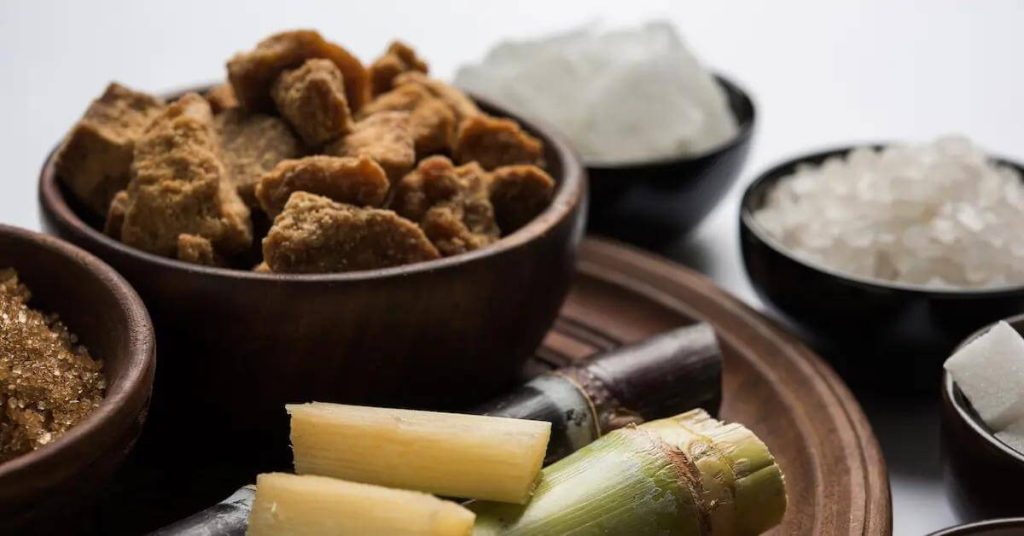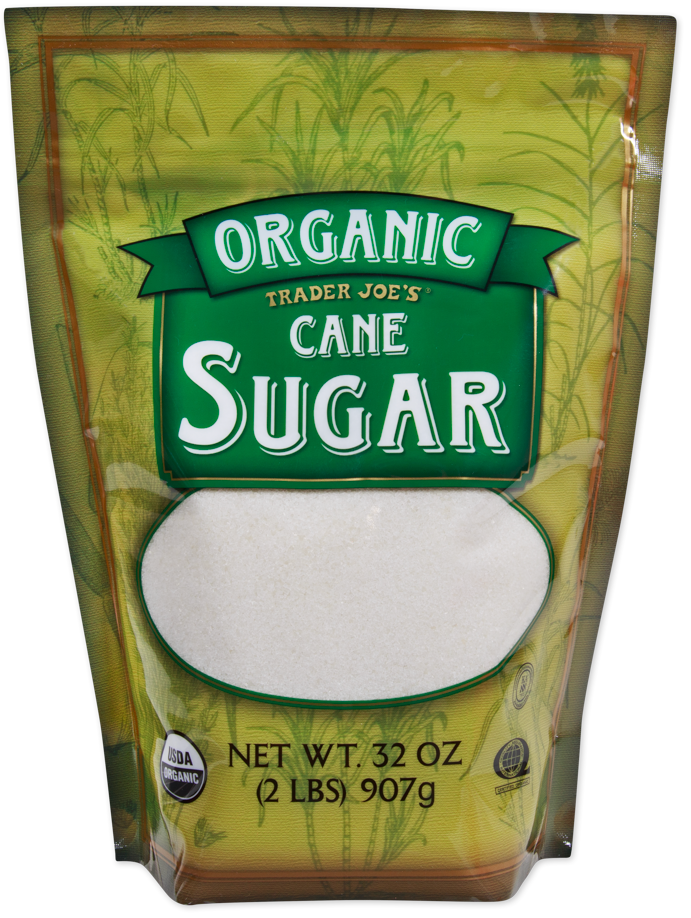The Trip of Cane Sugar Processing: From Harvest to Crystals
The Trip of Cane Sugar Processing: From Harvest to Crystals
Blog Article
An In-Depth Guide to the Ecological Impact and Sustainability Practices in Walking Cane Sugar Handling
The environmental effect of cane sugar handling provides a complicated selection of challenges that warrant careful examination. From soil deterioration and too much water usage to the carbon footprint associated with growing and manufacturing, the effects of standard methods are far-reaching. What certain methods can be applied to strike a balance in between efficiency and environmental stewardship?
Overview of Walking Stick Sugar Handling
Walking stick sugar processing involves a collection of methodical actions that transform sugarcane into polished sugar. Originally, collected sugarcane is transported to refining facilities, where it goes through cleaning up to remove dirt and debris. Following this, the walking stick is squashed to draw out juice, which is after that clarified by eliminating pollutants with heating and the enhancement of lime.
The clarified juice goes through evaporation, where water is removed to concentrate the sugar web content. These crystals are divided from the remaining syrup utilizing centrifugation, resulting in raw sugar.
The last item is after that dried out and packaged for distribution. Throughout this entire process, maintaining performance and quality assurance is vital to make sure the sugar satisfies sector standards. Each action in walking stick sugar handling not just adds to the final item but additionally has ramifications for resource use and waste generation, setting the phase for discussions on sustainability and environmental effects connected with sugar production.
Ecological Obstacles of Manufacturing
The production of walking stick sugar presents a number of substantial environmental difficulties that warrant attention. One main concern is the substantial use agrochemicals, consisting of fertilizers and chemicals, which can result in dirt destruction, biodiversity loss, and contamination of neighborhood water resources. The drainage from sugarcane fields frequently carries these chemicals right into close-by communities, disrupting water life and affecting the health of communities reliant on these water bodies.
One more challenge is the high energy consumption related to sugarcane processing. The boiling and refining stages need substantial warmth, mainly created by shedding fossil gas, adding to greenhouse gas exhausts. Additionally, the expansive land location required for sugarcane cultivation can cause deforestation and habitat devastation, more exacerbating environment change and harmful wildlife.
In addition, the labor techniques in some regions elevate honest problems, as employees may encounter inadequate working conditions and inadequate earnings. This circumstance commonly continues a cycle of poverty in neighborhood areas. Cane Sugar Processing. Resolving these ecological difficulties is important for creating more lasting practices in walking stick sugar manufacturing, eventually benefiting both the atmosphere and the communities entailed in this industry
Water and Land Usage Impact
Water sources and land application are vital elements in the walking stick sugar industry that significantly influence the setting. The farming of sugarcane requires substantial water input, with estimates suggesting that it can eat up to 2,000 litres of water per kg of sugar created. This intensive usage of water frequently leads to exhaustion of local water sources, influencing not just the sugarcane haciendas however additionally surrounding ecological communities and neighborhoods that depend on the same water resources for farming and domestic use.

Moreover, land usage for sugarcane growing can result in logging and the conversion of natural environments right into monoculture plantations. This technique decreases biodiversity, disrupts neighborhood communities, and adds to soil degradation. The expansion of sugarcane fields usually intrudes on beneficial farming land, creating competitors for resources between food and biofuel production.
Lasting methods, such as optimizing watering techniques and executing crop turning, are important to mitigate these impacts. By embracing much more reliable water use and land monitoring approaches, the walking cane sugar industry can decrease its environmental impact, making sure a balance in between agricultural productivity and environmental preservation.
Greenhouse Gas Emissions
Greenhouse gas emissions represent a significant ecological concern within the walking cane sugar handling industry, specifically as farming methods increase to fulfill international need. The farming of sugarcane, a crop that flourishes in tropical climates, counts greatly on synthetic fertilizers and chemicals, which contribute to laughing gas emissions. Furthermore, land-use adjustments, consisting of deforestation for new sugarcane ranches, launch carbon dioxide kept in plants and dirt.
Throughout processing, power intake is one more major resource of greenhouse gas exhausts - Cane Sugar Processing. Many sugar mills make use of fossil fuels to power equipment and produce warm, causing significant carbon impacts. Furthermore, the transport of raw sugarcane and try this completed products adds layers of discharges with fuel burning in automobiles
This involves evaluating present farming techniques, refining approaches, and transportation systems to determine areas for renovation and mitigation. Resolving greenhouse gas exhausts is essential for fostering a much more lasting walking stick sugar market in an altering environment.

Lasting Practices and Innovations
Sustainable practices and developments are significantly essential in the walking stick sugar processing market as stakeholders look for to reduce environmental effects while maintaining productivity. One substantial innovation is the execution of integrated crop management, which maximizes resource usage by incorporating soil monitoring, pest control, and crop rotation strategies. This method boosts yield while reducing chemical inputs and preserving dirt health and wellness.
Additionally, the fostering of sustainable energy resources, such as biomass from sugarcane deposits, has gotten grip - Cane Sugar Processing. By transforming waste products into power, processing facilities can decrease their dependence on fossil fuels, thus decreasing greenhouse gas exhausts
Water monitoring techniques have actually additionally seen improvements via the recycling and reusing of water in handling plants, dramatically decreasing freshwater consumption. Technologies in technology, such as accuracy agriculture, allow farmers to keep an eye on crop wellness learn this here now and source use a lot more effectively, ensuring lasting farming practices.
Moreover, certification programs like Fair Profession and Rain forest Alliance urge eco accountable farming techniques and advertise social equity within the supply chain. By embracing these sustainable practices and developments, the walking stick sugar processing sector can boost its durability and contribute favorably to environmental stewardship.
Verdict
The environmental impact of cane sugar processing presents considerable difficulties, including soil destruction, high water intake, and greenhouse gas discharges, together with moral problems connected to labor techniques. Attending to these problems through lasting methods, such as incorporated crop administration, renewable resource adoption, and water recycling, is necessary. By advertising eco responsible and socially equitable methods in sugar production, the sector can reduce its adverse effects, making certain an extra lasting future for both communities and environments involved in my blog this sector.
Walking cane sugar processing involves a collection of systematic steps that transform sugarcane into polished sugar. Each step in walking stick sugar processing not only contributes to the final product yet also has ramifications for source use and waste generation, setting the phase for discussions on sustainability and environmental influences associated with sugar production.
Greenhouse gas exhausts stand for a significant ecological worry within the walking cane sugar processing industry, particularly as agricultural techniques expand to fulfill worldwide demand.Sustainable methods and technologies are increasingly vital in the walking stick sugar processing sector as stakeholders look for to minimize ecological influences while keeping performance.The environmental influence of walking stick sugar handling offers considerable difficulties, including soil degradation, high water intake, and greenhouse gas exhausts, together with honest concerns associated to labor practices.
Report this page